A few interesting facts about Kuttanad – The land of backwaters and paddy fields
Kerala owns a great agricultural heritage, closely linked with green fields, water bodies and cultivation. Kuttanad – the rice bowl of Kerala owns an integral part in this rich heritage of God’s own country. In the ancient Travancore there were two rice granaries. The first one is Kuttanad and second one is Nachinadu. A few years back Kuttanad has entered into the list of Globally Important Agricultural Heritage Systems. It covers Alappuzha, Kottayam and Pathanamthitta districts of Kerala.
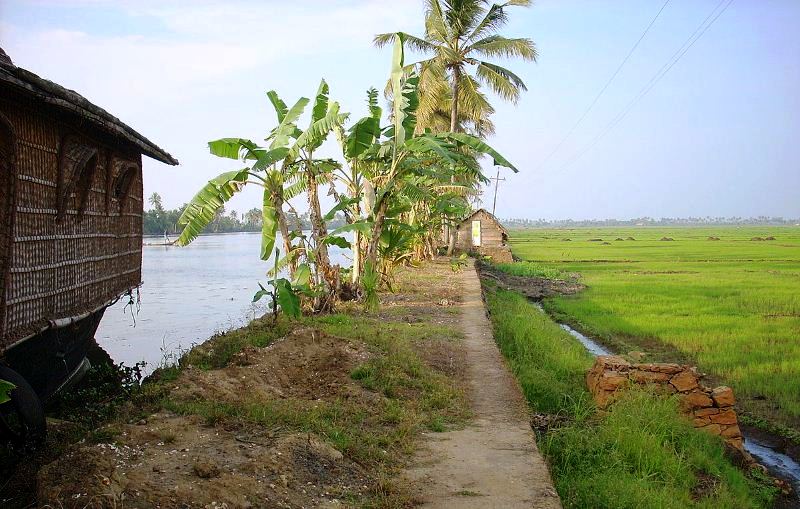
During the Sangha literature age, among 5 Thinas, Kuttanad was included in Marutham. In Thakazhy’s famous novel, Randidangazhi, you can get a full sketch of Kuttanad. An excellent location for photographers, nature lovers and birdwatchers, no doubt Kuttanad is one of the most beautiful places of the country, rich in flora and fauna. Also read: Kuttanad is famous for lakes and dishes.
There are many stories behind the name ‘Kuttanad’
Historians have different opinions regarding this matter. ‘Kuttante Naadu’ – some people say that the name was derived from this phrase. But who is this Kuttan? Is he a labourer of paddy fields, or is he Karumadi Kuttan? Or does it indicate Dravidian culture and heritage? There is no apt answer for all these questions.
The clay of Kuttanad has oil black colour, best suited for farming. During ancient times, farming was conducted in ‘Kara Padam’, a part of normal land. Farming was expanded by removing excess water from plot. Later farming was expanded to lakes. Big boundaries were constructed in water, wheels were manually rotated to remove water, and then farming was done. Remember Kuttanad is situated beneath sea level.
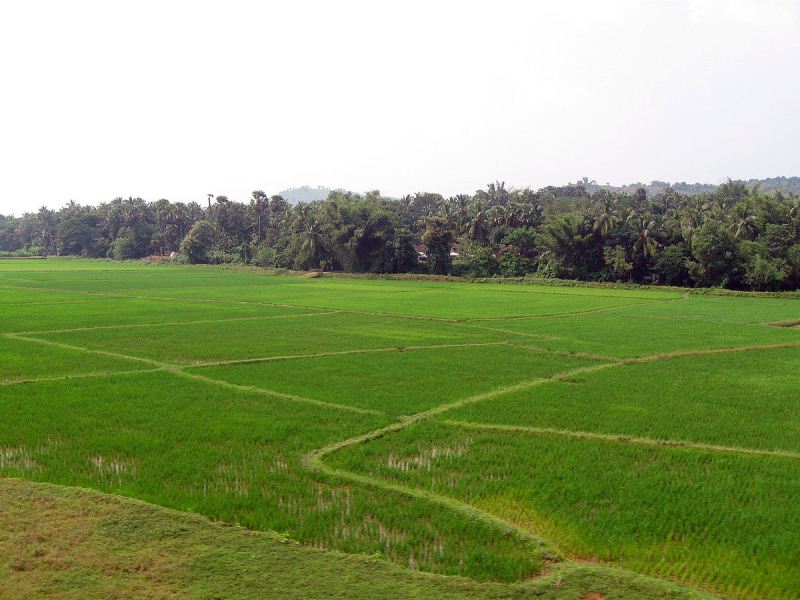
There was a tremendous change in the life style of Kuttanad people towards the end of 19th century. Some brave and adventurous agriculturists and farmers decided to start lake farming on experimental basis. In the vast spread Vembanad lake, they fixed the wood of coconut trees, aracanut trees, bamboos, grass (Kora pullu), mud and snake to prepare artificial dams (Chira). Risk factor was high as it involved life threat.
Using wheel they manually pumped out water. To get rid of tiredness and hunger, they ate fish and tapioca, and local arrack. They keep singing while they were working and after tedious process, finally they succeeded in changing marshy land to agricultural lands. Across the globe, there are only two places where rice is cultivated beneath sea level – Kuttanad of Kerala and Netherlands.
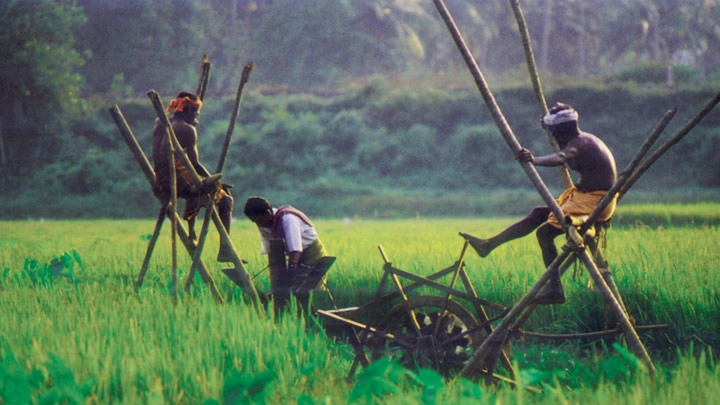
Chuttanad or Buddhanad?
There is one popular belief that Kuttanad was once a forest. Myths suggest, Pandavas lived in the deep forests of Kuttanad. Later the forest was destroyed in wild fire, and hence the name Chuttanad. In certain regions of Kuttanad (in Kalinilam) remains of such destroyed trees and burnt logs are mined in recent past, supporting this story. Names like Kainakari, Ramankari and Chennankari also emphasise the same kind of thoughts.
Another popular belief suggests that Kuttanad was once under seas. Remains of sea shells and mussels are available in paddy fields, supporting this theory. During the early years after Christ, Kuttanad was a part of ancient Tamil Nadu, certain historians suggest. It’s believed that Kuttanad was the state capital for Chera king Cheran Chenkuttavan. As it was a major centre of Buddhism, the place was also known as Budhanad. Some historians believe that the statue of Karumadikuttan in Karumadi of Kuttanad is none other than Lord Buddha.
Once crocodiles fully dominated the water bodies
It’s said that before 100-150 years there were crocodiles in the water bodies of Kuttanad. They used to attack people and children too. For the same reason people feared to live on river banks. Boat service was the only form of transport available. Wherever you need to go, you can depend on rowing boats only, that was the condition one century ago in Kuttanad. Slowly motor boats came in. Because of their noises crocodiles fled from the place.
Later road transport came into existence, and development started progressing, like other parts of Kerala. But during this development process the environmental conditions of this small and beautiful place was very much neglected. Now Kuttanad packages have been announced, which emphasises on protecting the environment.
Kuttanad also owns numerous ‘Naadan Paattukal’
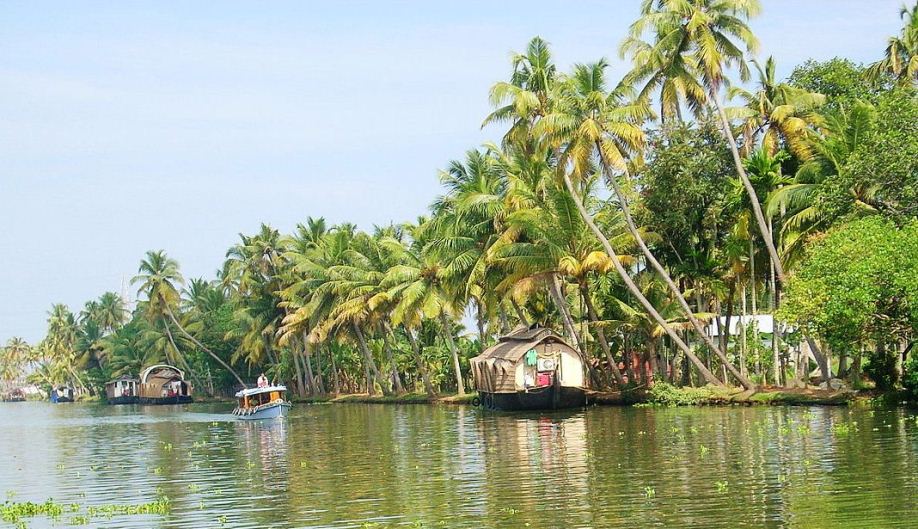
For entertainment purposes, people used to sing while they are busy in paddy fields. For the same reason, there are many local songs with the flavour of Kuttanad soil and people. There were separate songs for sowing, reaping, removing weeds, rotating wheel using feet etc. There was a time when such songs echoed across Kuttanad. Now things have changed, and men have been replaced by machines. Now while you are walking through small paths within the fields, only machine sounds welcome you. That was not the case a few decades ago. For sowing, ploughing, reaping and removing rice seeds from plants machines are available.
When farming methods changed, Kuttanad lost farming songs too. It can’t be denied that such machines have lessened human efforts very much. But we lost many good nostalgic moments too, forever! Though development has reached Kuttunad, life condition of farmers has not improved in that proportion. So it is the duty of we people to retain the agricultural heritage of Kuttanad.
Cultural heritage centres of Kuttanad
Globally Important Agricultural Heritage System (GIAHS) is determined based on the richness of soil, biodiversity and agricultural heritage of a particular place, and is globally recognized. As per FAO such places, where there is a deep bond between people and environment are to be preserved and conserved. Such organizations choose such places, keeping these things in mind. It was started in year 2002, and it carries some basic requirements and principles.
Fish and duck farming alongside rice
It looks contradictory, to grow fish and duck in paddy fields. But it is true. Once the paddy fields are reaped such things are incorporated which gives people additional income. When paddy fields are reaped, the land will have rice seeds which help in duck farming. Along with it fish and duck feed on fresh water mussels and small fishes. It’s a spectacular visual to watch swimming ducks in waters.
People grow Chaara and Chempalli varieties of ducks here. People also cultivate prawns and different forms of fish in the filler times of paddy cultivation, soon after reaping fields. People also collect shells from lakes, which is yet another source of income.
Kuttanadan Puncha
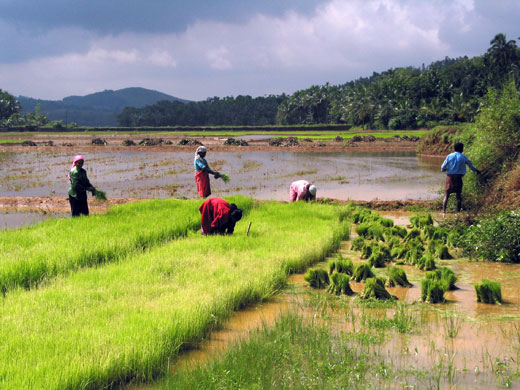
“Kuttanadan Punchayile Kochupenne Kuyilaale… “
This boat song is indeed famous. Among all forms of cultivation, rice has much larger significance. Fields of Kuttanad are broadly classified into three – Lower Kuttanad, Upper Kuttanad and North Kuttanad. Land bit higher where people reside (Kara Nilam), Kari Nilam (1.5 – 2 metres beneath sea level) and Kayal Nilam (at 1-2 meters depth) – in local terms. Kuttanadan fields which expand in Alappuzha, Kottayam and Pathanamthitta districts have a total surface area of over 50K hectares. Each paddy field is spread in hundreds of acres.
Names of most villages of Kuttanad are coined from such paddy fields – Kainakari, Ramankari, Ranikayal, Chithirakayal and Chennankari etc to mention a few. Puncha Krishi during the months, November- March is most important in Kuttanad. 37% of rice cultivation of Kerala is being contributed by Kuttanad.
Birds’ Paradise
Known for its biodiversity, it is a home for many native and migration birds too. Oriental Darter, Sport Build Pelican and Black-Build Turn are among 50+ migrating bird varieties which visit this place. During season the count reaches 20K plus. More than 65 edible varieties of fresh water fish such as Aatuvala, Manjakkoori and Karimeen and also fresh water prawns are available here. There are more than 14 types of fish available with covers (which include prawns too). Different types of crab, tortoise, mussels, clams, medicinal plants, mangrove forests, water plants etc enrich the biodiversity of Kuttanad. Kumarakam bird sanctuary is also famous.
Visuals are not ending here
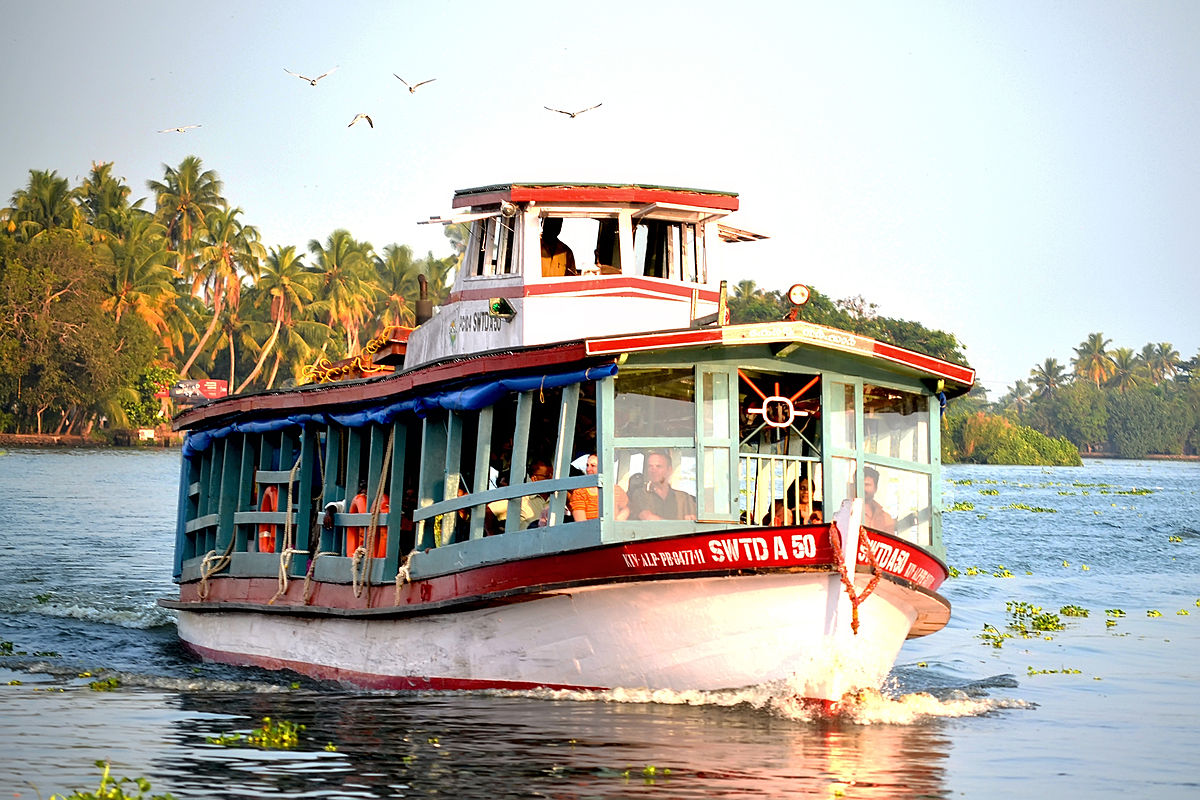
Water bodies spread across miles, boats (Kettu Vallam), house boats, vast stretched green paddy fields broken by canals or water transport system, small island-like structures filled with coconut trees, gentle breeze across the lakeside – all these factors attract tourists to Kuttanad. In fact Kuttanad is the most sought tourist location of God’s own country. Boat races are conducted every year at Aranmula, Punnamada Kayal and Champakulam. Tapioca, duck, fish, clam roast, crab, coconut toddy etc are trademark dishes of Kuttanad.
Kuttanad also serves as water reservoir of Kuttanad and surrounding places. During monsoons it absorbs excess water thus blocking floods, and during summers it stores water. Yet excess use of pesticides, floods and pollution caused by nearby towns affects the equilibrium of the eco system, giving threats. Imitating Kuttanad, Maldives and Bangladesh have already begun rice cultivation.
You can read a few more articles on some of the major tourist spots of Kerala here. Here is the page link. Click on the images in the gallery to read

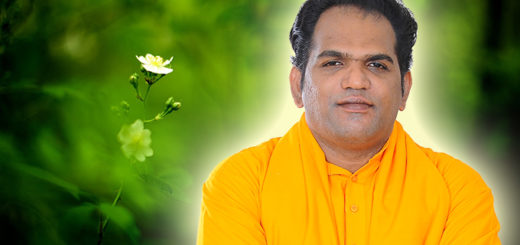

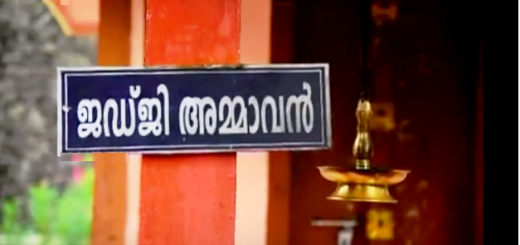










Recent Comments